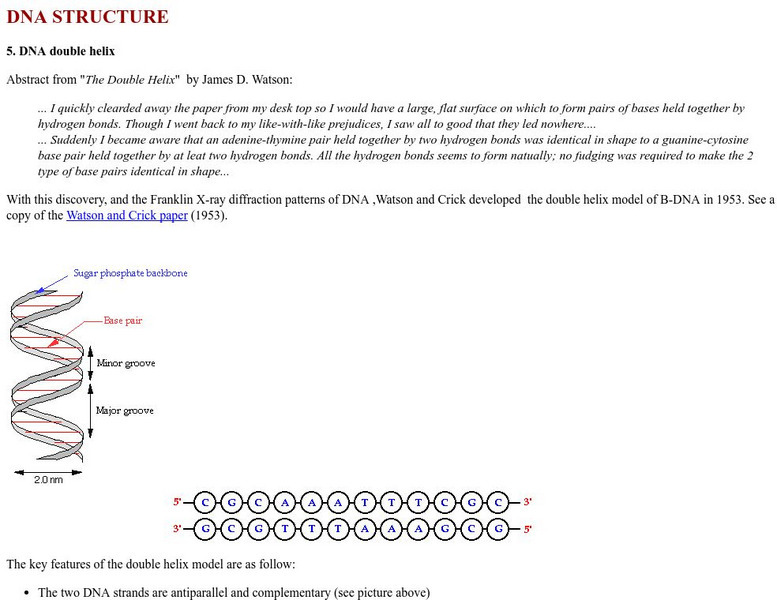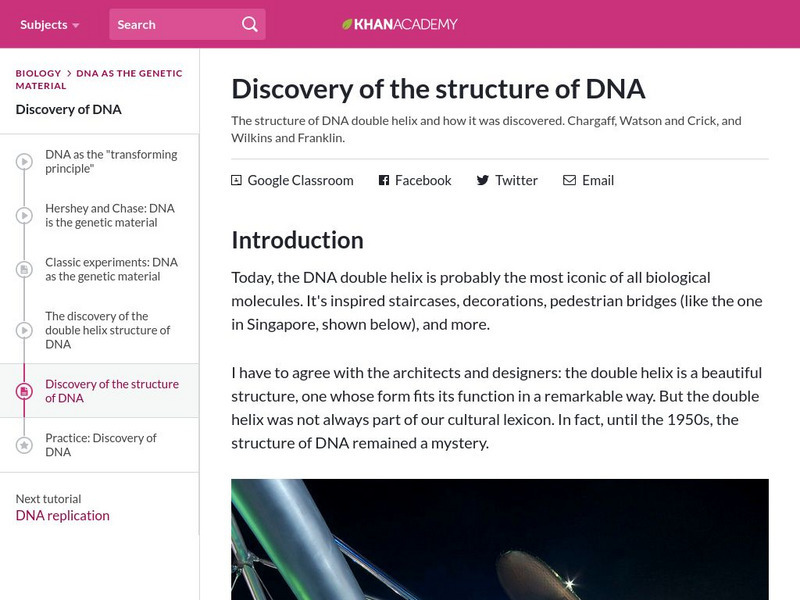Curated OER
X or Y- Does it Make a Difference?
Students examine the X and Y chromosomes. In this research lesson, students use the 5E lesson model as they read articles about human chromosomes then discuss their findings and opinions.
Curated OER
Human Body Quiz
In this human body learning exercise, students complete short answer questions about the organs in the body and their functions. Students complete 20 questions.
Curated OER
The Cell - Internet Activity
For this cells worksheet, students click on the links to learn about the plant and animal cells complete a comparison chart and answer short answer questions about it. Students complete 10 questions total.
Curated OER
Evolution Concept Map
In this biology worksheet, students complete a concept mp on the theory of evolution by natural selection. They fill in 8 blanks with the correct terms from the list.
Curated OER
Math Club #16: Knot Theory
In this math club #16: knot theory worksheet, 9th graders read about knot theory, analyze diagrams of knots, make knots to match the diagrams and answer 6 questions about advanced knots.
Curated OER
Biotechnology
Students explore biotechnology through various activities. In this biology lesson, students analyze its pros and cons. They study and read informative articles about biotechnology.
Curated OER
Proteins Expressed At Different Stages
Students investigate protein electrophoresis in a lab setting. Full laboratory equipment is needed and safety should be taught. The level of prior knowledge needed to perform lab is high and is ideal for an honors class.
Curated OER
Bacterium Cells
In this bacteria worksheet, students read several elements of bacterium cells, their diet, types, locations, reproduction, resting stages, effects of, and classification. Students also study a cross-section of bacterium cells.
Curated OER
Blood Business
Young scholars identify the different kinds of blood. In this biology lesson, students investigate the antigens, agglutinins and Rh factor using their own blood. They use Punnett squares to predict blood type of offspring.
Curated OER
What Happens When A Cell Divides?
Students investigate the cycle of mitosis. For this biology lesson, students discuss the different stages of mitosis through cell reproduction. They further their investigation through laboratory analysis.
Curated OER
Polymers and Crystals
Learners experiment with crystals and polymers and examine their roles in food science.
Curated OER
Elements Found in Living Things
In this elements worksheet, students review the most common elements found in living things. Students color in two pictures with the percentages of the elements found in that living thing.
Curated OER
Virus Tracker
Sixth graders will simulate the spread of a virus such as HIV through a population by "sharing" (but not drinking) the water in a plastic cup with several classmates. Although invisible, the water in a few of the cups will already be...
Curated OER
Cells and Cancer
Students idenitfy that cancer is a growth of mutated cells and that cancer cells are only one type of cell that causes disease in our body. They also identify that all eukaryotic cells contain a nucleus, cytoskeleton, and a cell...
Curated OER
Technology
High schoolers recognize descriptions of different types of biotechnology currently being used. They form persuasive arguments for or against that particular type of biotechnology.
Curated OER
Viruses and Host Evolution
Young scholars research viruses and their effects on the evolution of a rabbit population. They complete a teacher created worksheet of questions on their research. They present their research to classmates.
Curated OER
Moore S Word Search Puzzle
For this literacy worksheet, students find the words that are in the word search puzzle that focus upon the vocabulary that is from the theme of the sheet.
Curated OER
Moore S Word Search Puzzle 1
In this literacy learning exercise, students find the words that are in the word search puzzle that focus upon the vocabulary that is from the theme of the sheet.
Curated OER
Endocrine System
In this endocrine system activity, students compare and contrast the glands associated with this body system plus review the four major classes of hormones. This activity has 25 fill in the blank statements.
Khan Academy
Khan Academy: Biology: Macromolecules: Nucleic Acids: Molecular Structure of Dna
Explore the molecular structure of DNA in this article. Learn about the components of DNA: nucleotide, nitrogenous base, and phosphate.
Vision Learning
Visionlearning: Biology: Dna Ii: The Structure of Dna
Instructional module focusing on the physical structure of DNA. Discussion incorporates the description of the nucleotides, base pairs, and the double helix shape of a DNA molecule. Site also includes an interactive practice quiz and...
Story Behind the Science
Story Behind the Science: Piecing Together the Structure of Dna [Pdf]
Outlines the history of the scientific efforts that went into the discovery and mapping of the structure of DNA, spanning one hundred forty years.
University of Southern California
University of Southern California: Dna Structure
A really nice web page devoted to the structure of DNA. Simple information but nice use of graphics to show the molecule. Uses the CHIME plug-in to show the 3-D nature of the helix.
Khan Academy
Khan Academy: Discovery of the Structure of Dna
Explore the structure of DNA double helix and how it was discovered. Learn about the work of Chargaff, Watson and Crick, Wilkins, and Franklin.
Other popular searches
- Dna Structure
- Dna Structure and Function
- Dna Structure Powerpoint
- Dna Structure Model
- Dna Structure Concept Map
- Dna Structure Worksheets
- Modeling Dna Structure
- Dna Structure Paper
- Dna Structure Animations
- Dna Structure Lesson Plans
- Dna Structure Base Pair
- Discovery of Dna Structure



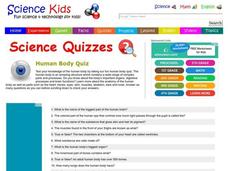








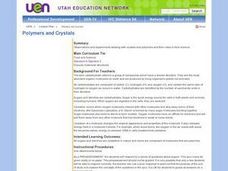
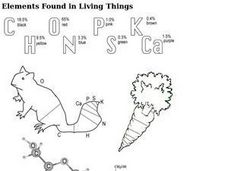





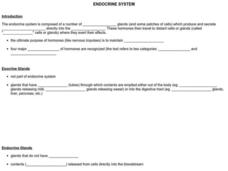

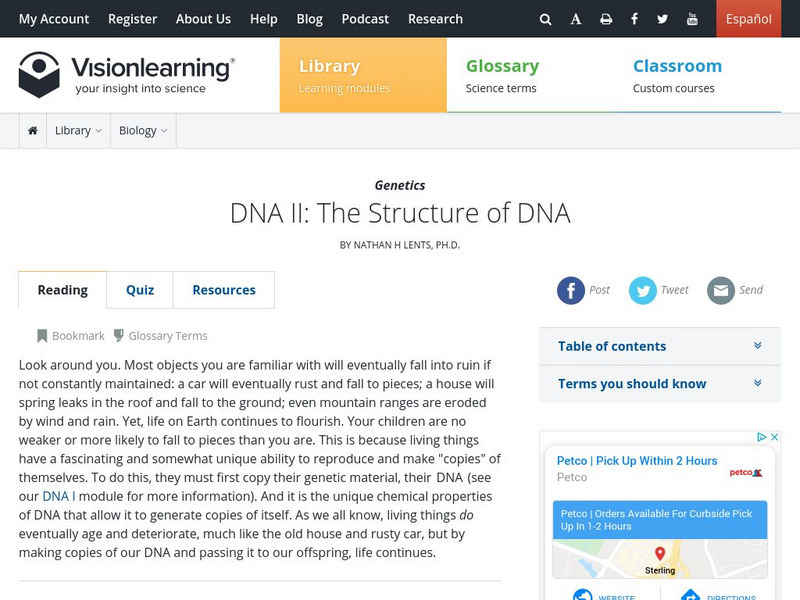
![Story Behind the Science: Piecing Together the Structure of Dna [Pdf] Article Story Behind the Science: Piecing Together the Structure of Dna [Pdf] Article](https://d15y2dacu3jp90.cloudfront.net/images/attachment_defaults/resource/large/FPO-knovation.png)
